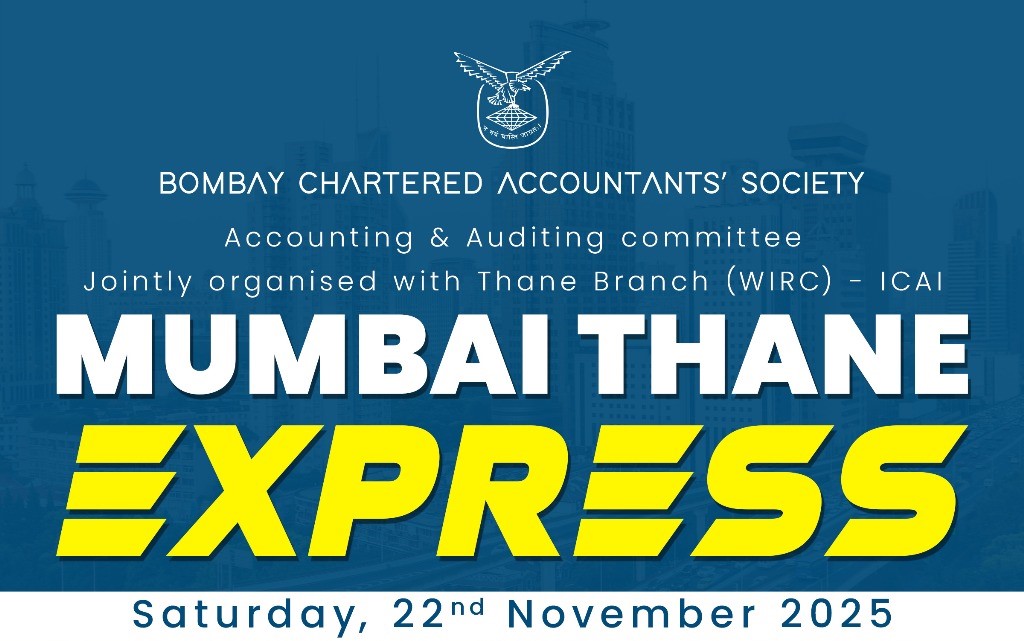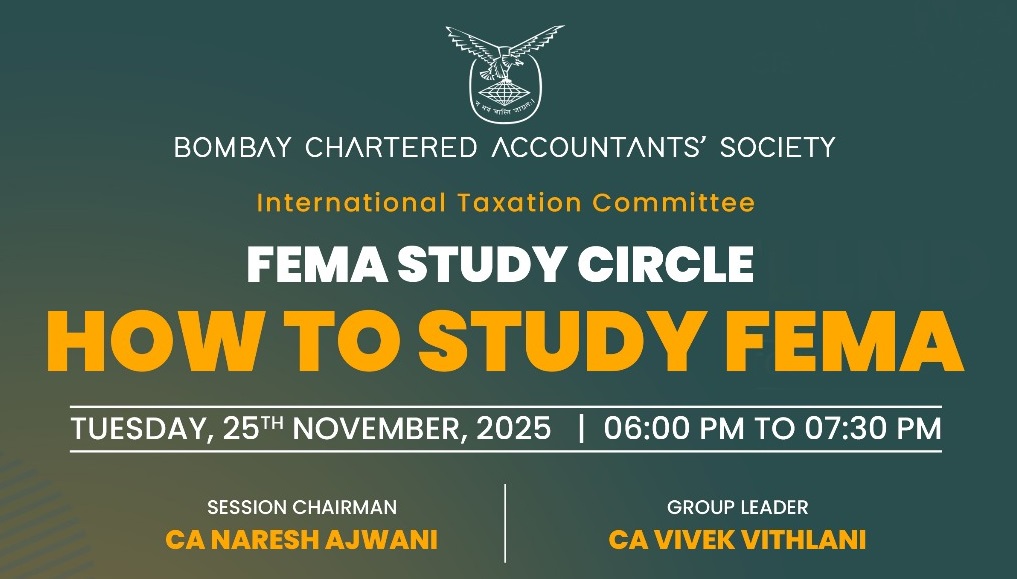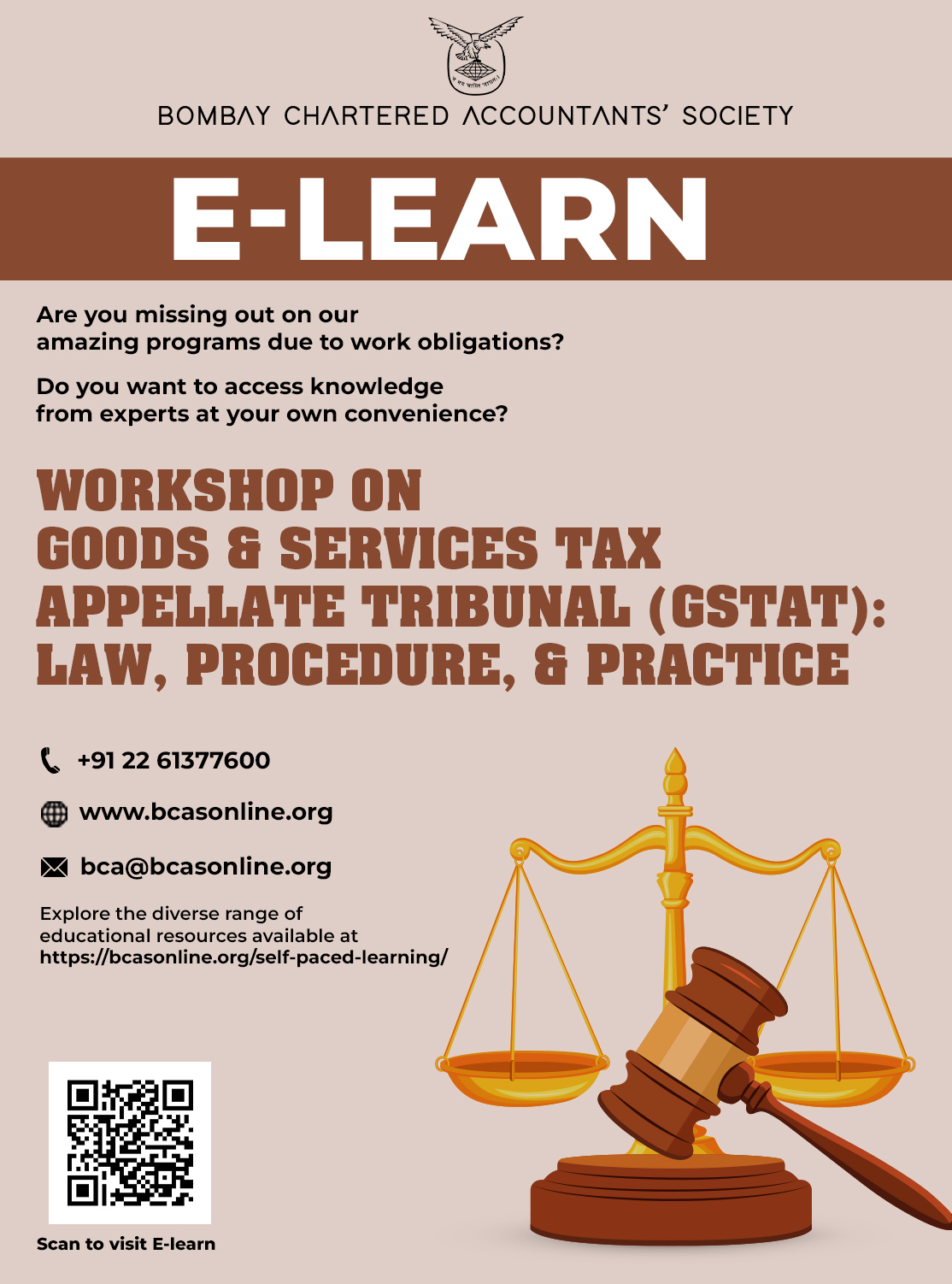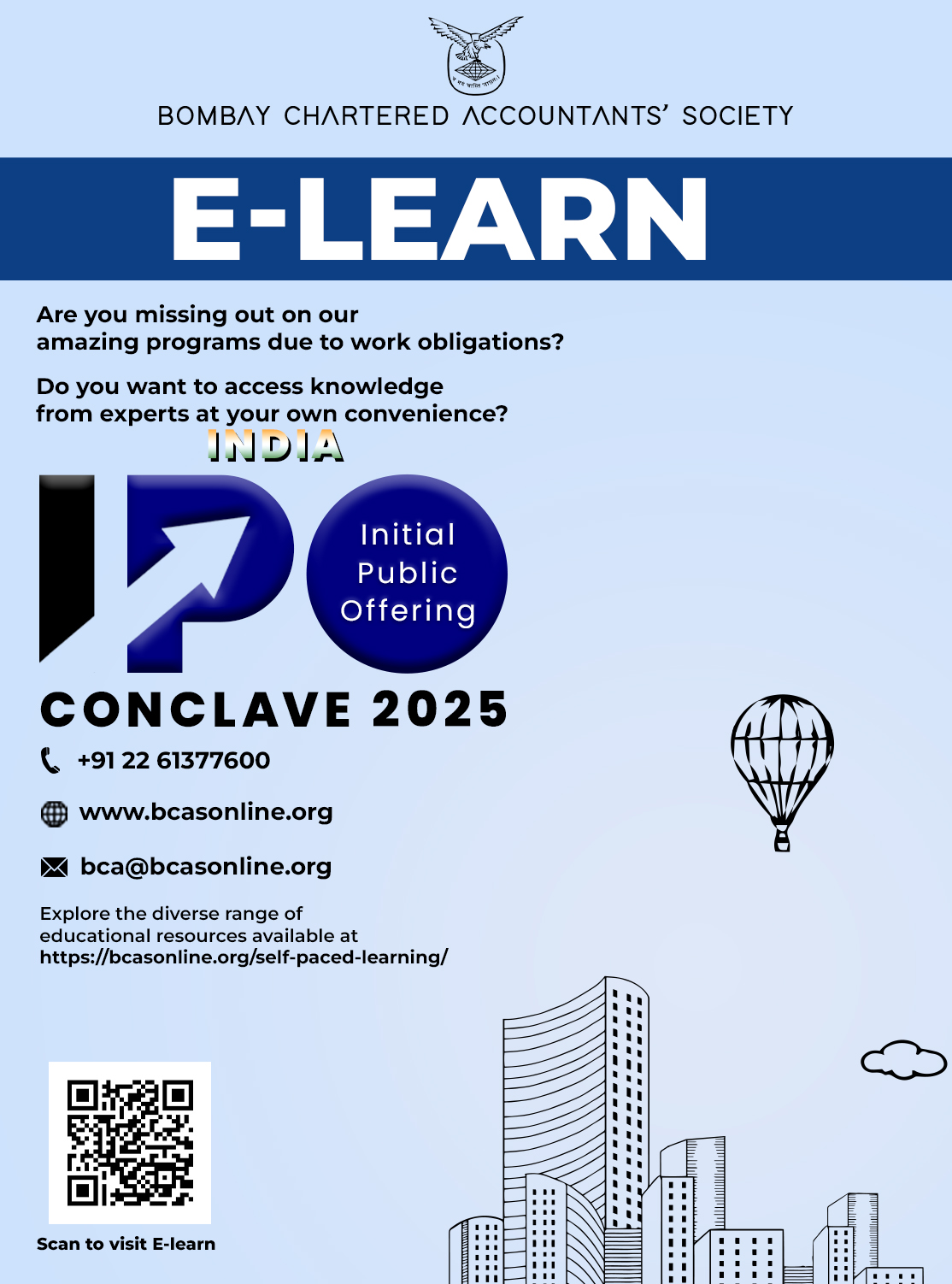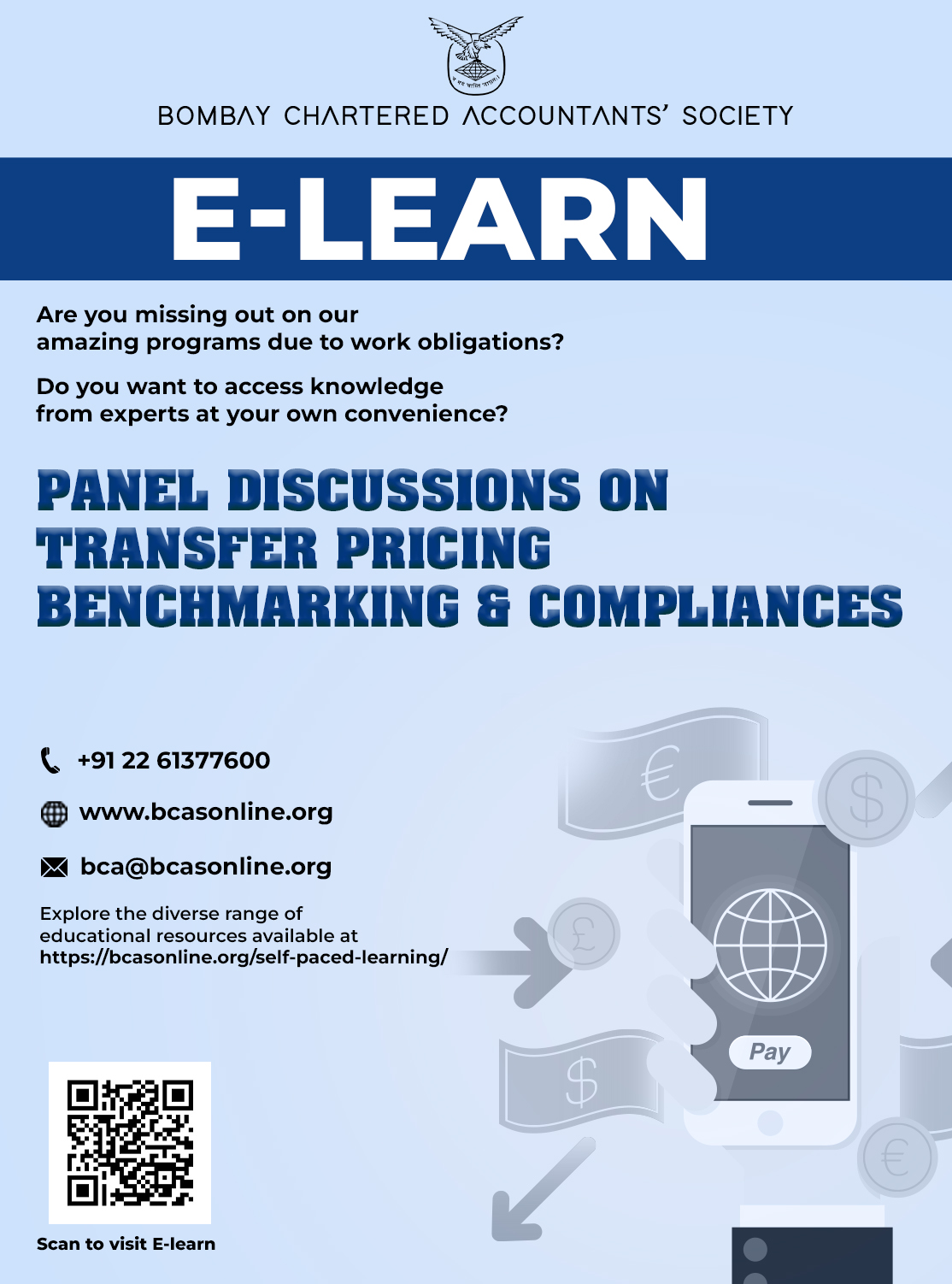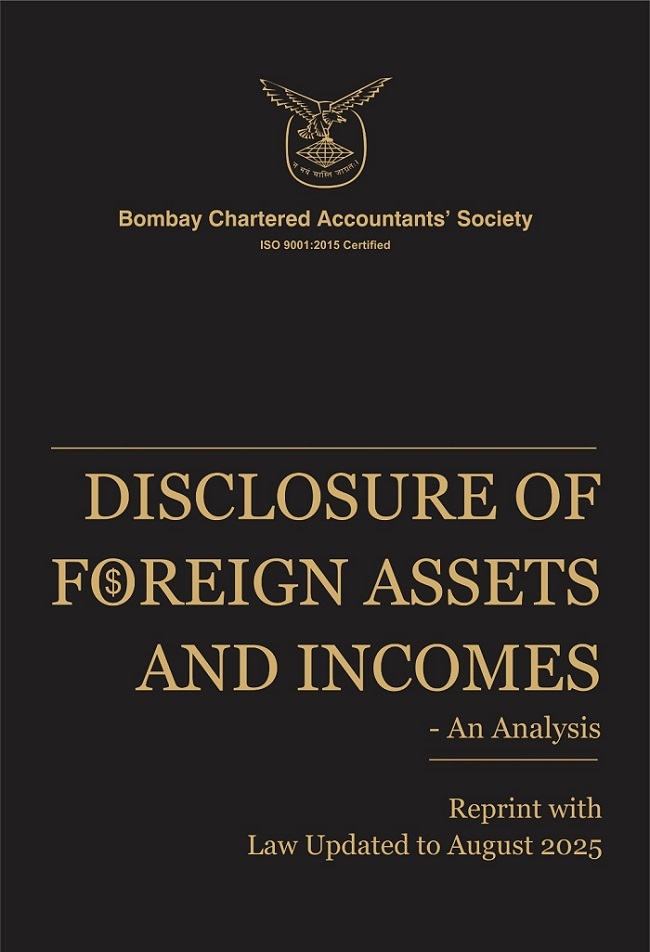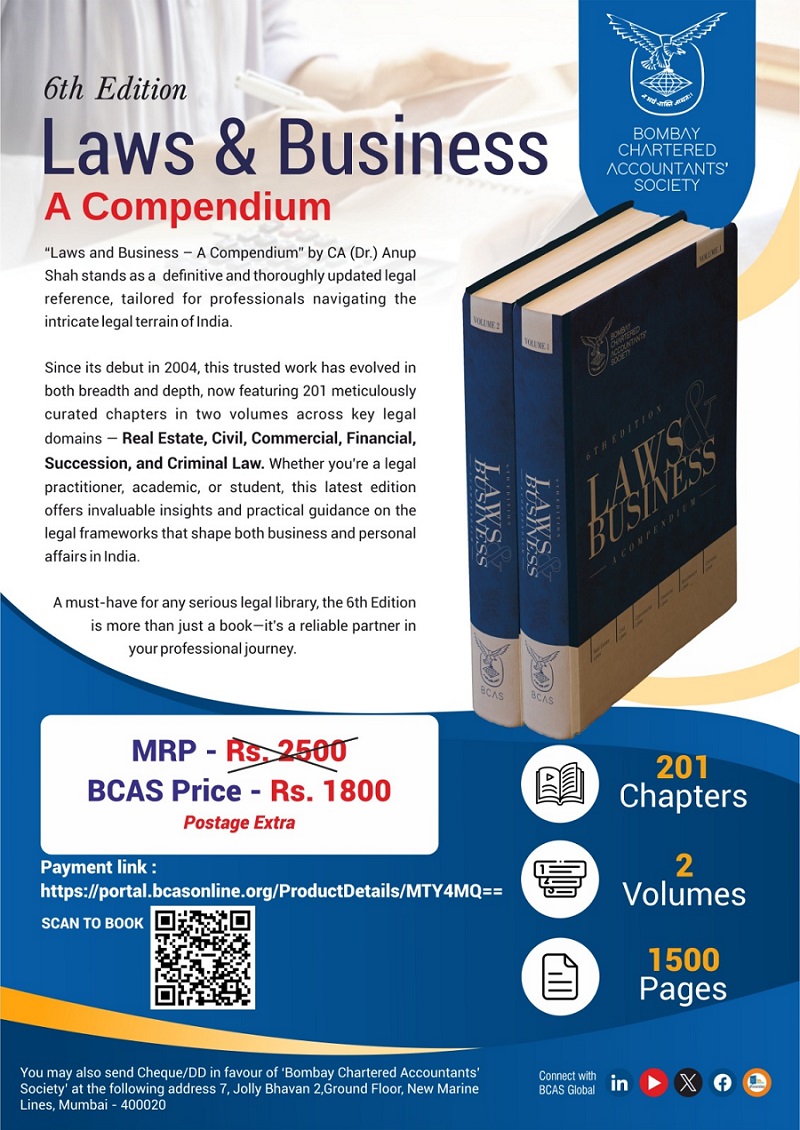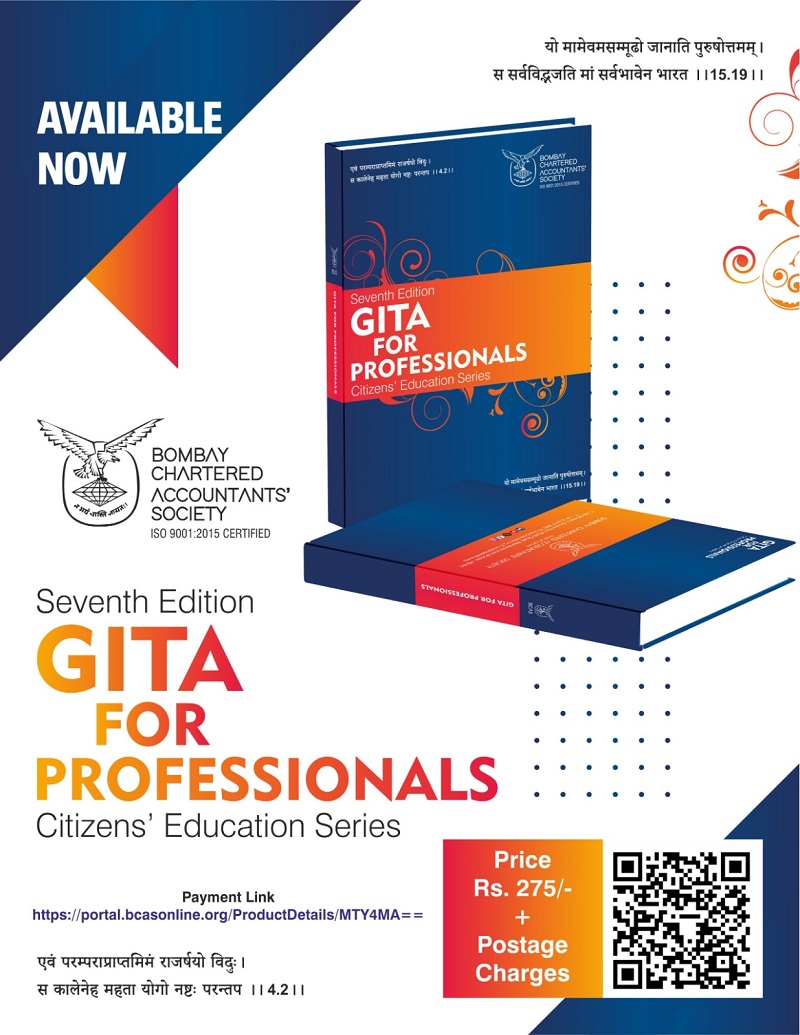- Learning
Learning
High-quality curated learning offerings through multiple formats on contemporary topics of professional importance.
Learn More - Journal & Publications
Journal & Publications
Stay abreast with the latest developments in the professional domain along with in-depth analysis through the monthly BCA Journal. Get access to an engaging library of researched publications from the BCAS stable.
Learn More - Advocacy & Thought Leadership
Advocacy & Thought Leadership
BCAS through its advocacy initiatives has been a vital catalyst towards effective regulatory regime and public policy in areas of accounting, taxation, financial and related domains.
Learn More - About BCAS
About BCAS
BCAS is a knowledge-driven, apolitical, ethical voluntary organization working towards the professional development of Chartered Accountants for the past 75 years,
Learn MoreAbout BCAS
The Bombay Chartered Accountants’ Society (BCAS) is one of the largest and oldest independent and voluntary bodies of Chartered Accountants in India. With membership & subscribers exceeding 11,500 and a widespread presence across 400+ cities and towns in India, BCAS has been unwavering in its commitment towards the development of the profession since its inception in 1949.
Introducing you to the Bombay Chartered Accountants’ Society
BCAS is a uniquely positioned pan-India voluntary organisation of Chartered Accountants established in 1949 represented by membership across 400+ cities\towns of India. BCAS endeavours to be a principle-centred, learning-oriented organisation promoting quality professional education, networking and excellence in the profession of Chartered Accountancy. BCAS acts as a catalyst for better and more effective regulatory policies for cleaner and more efficient administration and governance.
The BCAS Legacy
Founded just six days after the Institute of Chartered Accountants of India in the year 1949, the BCAS is, in many ways, the torchbearer for the profession.
With an intent to inspire and nurture the professional spirit within its members, BCAS introduced novel features such as the long-term residential and non-residential refresher courses, the lecture meetings, the study circles, the workshops, the Referencer, the BCA Journal, publications. BCAS provides its membership base access to a sustainable, cutting edge and holistic learning platform, underlined by a reliable and knowledgeable network to confer and synergise with.
Center for Professional Development
The BCAS Centre of Excellence is a versatile space that caters to the diverse needs of its members – serving as a training centre or as a meeting room for various committee meetings, study circle meetings, lecture meetings, seminars, etc. The well-appointed library has a rich collection of books of professional interest.
BCAS Foundation
Established in May 2002, the BCAS Foundation is the social wing of the BCAS. Recognising the need to channel the philanthropic obligation that rests on the shoulders of every conscientious citizen, the main objectives of the BCAS Foundation are:
- Membership
Membership
Your BCAS membership offers you a host of advantages and benefits. Learn, network and engage towards a gratifying professional journey.
Learn MoreGet involved with India’s largest and oldest voluntary body of Chartered Accountants. Learn, Share and Network with peers and mentors towards building lifelong relationships.

Cloud Based Audit Platform
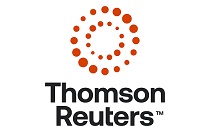
Online Electronic Audit Confirmation Tool

Office Automation & Practice Management Software


